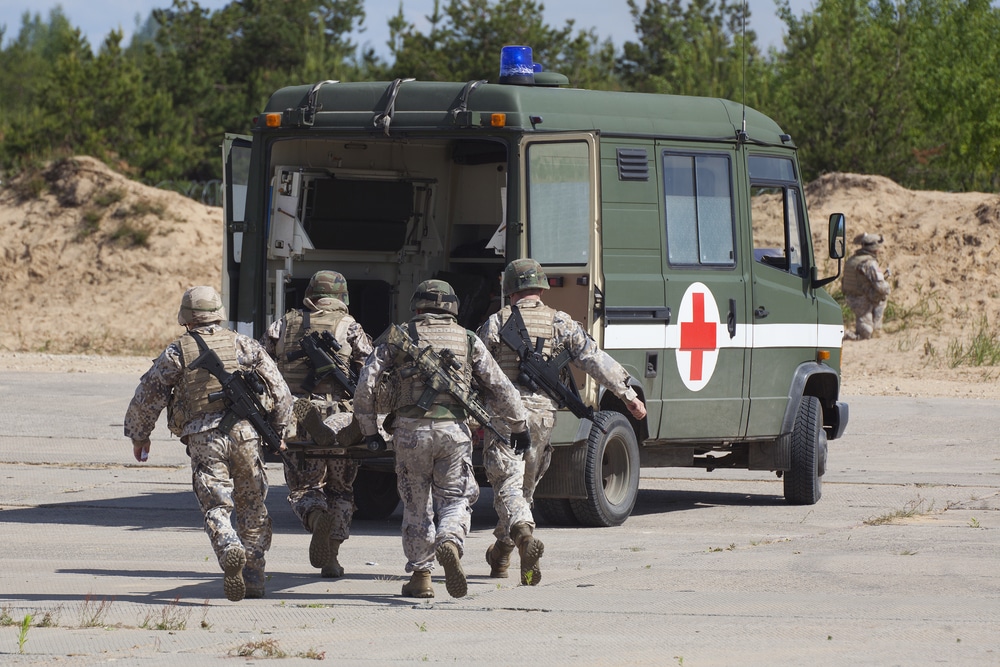Faron Pharmaceuticals Ltd presented data from its preclinical salvage, preservation, and advanced resuscitation through endothelial stabilization (SPARES) study at the Military Health System Research Symposium (MHSRS) in Orlando, Florida, this week.
The data was featured in the “Multi-Organ Dysfunction in Prolonged Field Care Scenarios” breakout session.
The SPARES study was a preclinical study, conducted on non-human primates (a representative model for humans), to understand the potential effects of Traumakine, Faron’s investigational intravenous interferon beta-1a therapy, on limb salvage and preventing multiple organ dysfunction in prolonged field care scenarios where blood flow to a significantly wounded limb is closed for rescue and transportation.
The study was coordinated in conjunction with investigators from Wake Forest Health, Duquesne University, the 59th Medical Wing of the US Air Force and with funding from the US Department of Defense.
How Faron Pharmaceuticals’ Traumakine works
Traumakine works by up-regulating CD73, a key organ protective endothelial enzyme that reduces inflammation and prevents vascular leakage. The study results showed a reduction in blood markers of muscle, liver, and kidney damage among animals treated with Traumakine. Repeated muscle biopsies in those animals showed a marked absence of immune cell infiltration, preservation of integrity of muscle bundles, no evidence of fiber atrophy or contraction bands in histopathology. The animals experienced significantly better recovery compared to control animals that were not treated. The study investigators believe this is likely to translate well into a human setting.
Faron Pharmaceuticals said results provide further evidence to support the systemic protective effect of intravenous administration of interferon beta, which was previously reported in Faron’s INFORAAA study, a human clinical trial to prevent multiple organ dysfunction. In the INFORAAA study patients who responded to Traumakine had 100% survival at day 90 compared to 66% survival among non-responders. Systemic organ protection, such as lower levels of kidney damage, was also seen in responders.
Further trials with Traumakine
“Results of the SPARES study showed that following treatment with Traumakine, there was no evidence of muscle atrophy or degeneration at 28 days, reaffirming my excitement in the potential of intravenous interferon beta to counteract widespread inflammation and decreased blood flow that, together, can result in limb loss and multi-organ dysfunction syndrome,” said principal investigator, Vijay S. Gorantla, professor of surgery at Wake Forest Institute for Regenerative Medicine and president of the International Society of Vascularized Composite Allotransplantation.
“This promising evidence supports further trials with Traumakine to understand its potential military application and in human surgical procedures where ischemic organs are often seen.”
“Once again we are reminded of the importance of the key endothelial enzyme CD73, and this data demonstrates the potential patient benefit within major ischemic and inflammatory settings,” said Juho Jalkanen, chief operating officer of Faron Pharmaceuticals.
“The presentation of these data at such a prestigious conference within the military community underscores how Traumakine holds the promise to be an important ‘golden hour’ therapeutic within combat scenarios where there remains a serious unmet need.”
About the MHSRS
The MHSRS is the US Department of Defense’s foremost scientific meeting and the premier military or civilian meeting focused specifically on the unique medical needs of the war fighter. It provides a collaborative setting for the exchange of information between military providers with deployment experience, research and academic scientists, international partners, and industry on research and related health care initiatives.
Topic areas are combat casualty care, military operational medicine, clinical and rehabilitative medicine, medical simulation and information sciences, military infectious diseases, and radiation health effects.





